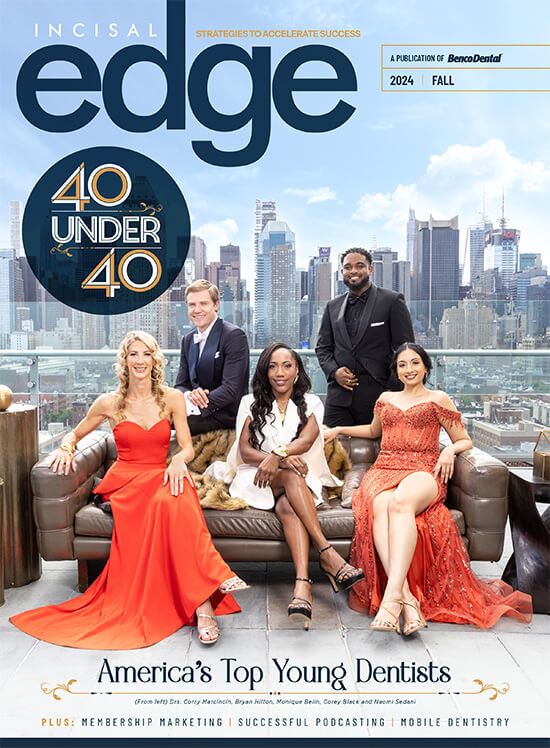Do you aspire to be, like the doctors featured in this issue, among the most sought-after practitioners in your region? Here are four things your practice won’t fully thrive without.

It’s hardly selfish to demand some significant financial rewards after investing personally and monetarily in dental school. The inescapable fact is that you can’t deliver great care and help more patients when you’re struggling. Therefore, if you’re going to build a practice, it should be optimized in every way to maximize your success, not to mention being a place that you’ll be proud of, and excited to work at, every day for years to come.
With that in mind, here are four things that by themselves are proven to make a positive impact on your practice’s success. Combine them, and you’ll be able to take advantage of a multipronged approach that powerfully encompasses marketing, patient experiences and your own personal wellness.
No. 1: Smaller, smarter, more ergonomic operatories. It’s 2022, yet dental operatory design remains stuck in the 1990s. At Benco Dental, we’re changing that with the “Just Right” operatory. It’s only about 18 percent smaller than a traditional room, but you can build six in the space of five for roughly the same cost. The benefits? Going from five to six ops has the potential to boost revenue by 17 percent and make your scheduling much more flexible. And because you’ll be positioned closer (but not claustrophobically so) to supplies and equipment, there’s less reaching and physical strain.
No. 2: Your welcoming area. This is your first opportunity to take full control of the patient experience. What patients first see and feel sets the tone for their visits and influences how much they want to return. It can soothe, reassure and pamper. It can also serve as a visual representation of your personal philosophy about dentistry and your practice’s brand. Why settle for less, when the only difference between a plain, dour waiting room and a stunner is thoughtful execution, not cost?
No. 3: Air quality. Smell affects perception at a primal level, even more than sight. The last thing you want is to elicit an unpleasant emotional response in patients, and musty dental odors and chemical smells are generally associated with places we don’t want to be. Plus, there are tons of airborne germs that can make you very sick, not to mention propanol, ethanol, formaldehyde and other volatile nasties released over the course of a normal day. Air purification helps control both contaminants and odors for a safer, more inviting environment that encourages patient loyalty and attracts great team members. With available options ranging from HVAC-mounted purifiers to free-standing filtration units and source capture devices, it’s easy to customize an
effective, affordable solution regardless of whether you lease or build.
No. 4: Branding. You can spend all you want on marketing, but if patients don’t associate it with your practice, it’s money down the drain. Brands like Apple and Target succeed in part because they’re instantly recognizable. A strong visual identity can deliver the same benefits for your practice and ensures that every positive patient experience and advertising impression gets tied right back to you.
If you’re building or refreshing your practice, make sure you include these four key pieces. Not sure how to get started? Make plans to attend Build Your Future, dentistry’s only immersive, hands-on workshop at which you can collaborate with designers and experts in dental equipment, finance, branding and more to create a plan for your ideal practice. Visit benco.com/build-your-future for details.
MELISSA SPRAU, NCIDQ is Benco Dental’s Vice President, Brand, Communication & Design. A graduate of Moore College of Art & Design, she has more than 13 years’ experience in facilities planning for a large health care system and several architectural firms.



